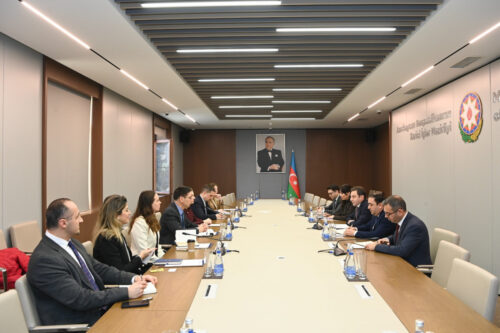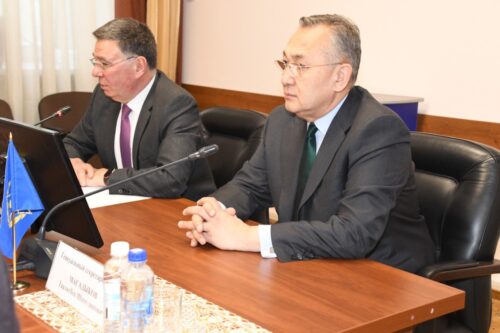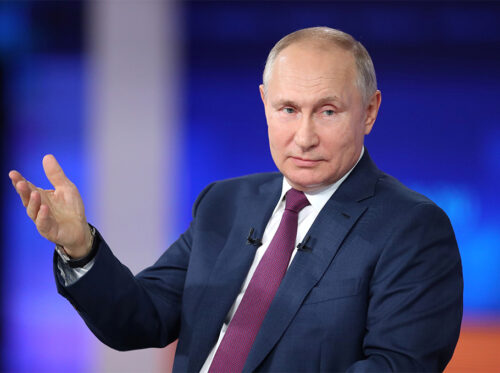
The future of the Ukrainian conflict
The U․S․ intends to provide another $225 million in aid to Ukraine in the near future. In an interview with Time, the head of the White House said that the West should not allow Ukraine to lose the war because it would lead to instability for the NATO member states bordering Russia and Belarus. At the same time, the U.S. president noted that this does not mean that Ukraine will become a member of NATO. Simply put, the West has the same relations with Ukraine as with other countries to which it sells weapons.
To remind, after the outbreak of the Russian-Ukrainian conflict, the West has already provided hundreds of billions of dollars in aid to Kyiv. Recently, the U.S. Senate approved a $61 billion aid package. There are plans to provide a $50 billion loan to Kyiv at the expense of the Russian frozen assets. However, the aid provided to Kyiv so far has not achieved a breakthrough. It ensured certain positional victories only in the short term, after which Russia again began to take the upper hand along the entire front line. And now the situation is more difficult for Kyiv than it was before. It is difficult, first, because Ukraine is already facing problems related to human resources.
The West can support Ukraine in this regard as well, by deporting the Ukrainians who have avoided military service, and by sending mercenaries to Ukraine. All the same, it will not change the situation in the long term. After all, some political theorists continue to make unrealistic predictions, despite the difficult situation that Kyiv is facing on the battlefield. These theorists used to claim that only the anti-tank weapons brought to Ukraine from the West could completely prevent the advance of the Russian armored vehicles. In fact, everyone saw what happened. Even now, these experts are excited that the West continues to help Ukraine. When it comes to Biden’s statement in his latest interview, where he said that peace for Ukraine means that Russia will never again occupy Ukrainian territories, these experts say that the West, in the person of the U.S., is ready to help liberate the Ukrainian lands that have been occupied and, moreover, to force Moscow to abandon further aggression against Kyiv. Actually, these are quite populist analyses. First, we should understand that President Biden is now running an election campaign, and it is natural that in his statements, he should have avoided negative processes, stating that they will continuously help Kyiv. At the same time, Biden could not admit that Ukraine’s situation on the battlefield is extremely difficult and that this country can be defeated within months, because such a confession would seriously affect his electoral campaign. In addition, the head of the White House admitted that they are not considering Ukraine’s membership in NATO in the near future. This statement proves that there is no open-door policy in NATO. The West does not need a country destroyed by war that may cause a direct conflict between the North Atlantic Alliance and Russia.
Here, questions may arise. Why did Europe and the U.S. give hopes for a bright western future to the Ukrainian citizens if nothing good is in store for this country in the future? Did the West also make mistakes in its calculations? The answer is definitely “no”. The point is that the victory of Ukraine has never been the cornerstone of the global West’s strategy. The main purpose was not to allow Ukraine to totally come under Moscow’s influence through a change of power and then to provoke a war, as a result of which Russia would use huge human, financial and military resources. This is a part of the West’s global geopolitics, and they are actually wearing down Russia with Ukraine. European officials sometimes admit this, noting that the supply of weapons to Kyiv is necessary to wage war against Russia without the participation of NATO soldiers. As for the so-called “multi-billion” aid, it should be noted that it has significantly been given to Ukraine in the form of a loan.
Now they even want to give Kyiv a loan from the frozen Russian assets. As for the armored vehicles sent to the Ukrainian front, more than half of them were, to put it mildly, not that modern. For example, Leopard-1s made up a significant number of German Leopard tanks. They were produced until the early 1970s and were withdrawn from the armies of European countries. It was assumed that in the near future the Leopard 1s and the other military equipment produced in those times should be disposed of, but thanks to the Ukrainian conflict, the Western second-hand equipment got a new lease of life under the name of multi-billion-dollar aid.
Thus, the aid provided to Kyiv will prolong the war for another eight to nine months, after which, taking into account the statements of the West that these are the last packages of aid, they will try to bring the parties around the negotiating table. Signals are also coming from Russia that they are ready for negotiations. Suddenly, all sides realized—as both of them claim—that they are closer to nuclear war than ever. A peace treaty will not be concluded between the parties, because Russia will not give up the territories that have come under its control, while Ukraine is not ready to accept losses.
A truce will be signed instead, with the condition of continuing peace negotiations later. Thus, the Ukrainian war will turn into a frozen conflict. We cannot rule out the possibility that Poland, Hungary, Romania and Moldova may base troops in the territories belonging to Ukraine, where Polish, Hungarian and Romanian minorities live. These countries now talk about the need to protect their minorities living in Ukraine from potential Russian aggression. In the event of such developments, the North Atlantic Alliance will recognize the achievements of these countries, while continuing to consider Russia’s presence in Ukraine to be occupation and usurpation. As for Ukraine, it will not do anything against the possible territorial ambitions of NATO countries, being drained by war and having a multi-billion dollar debt. What will be left of Ukraine—once having attractive prospects—is a state with an unclear status in the central part of its present territory, which will serve as a buffer zone between the West and the East. And this is natural, because that is what happens with the states that, not having their own aspirations and priorities, come to serve the interests of this or that geopolitical pole.
Ashot Barekyan


